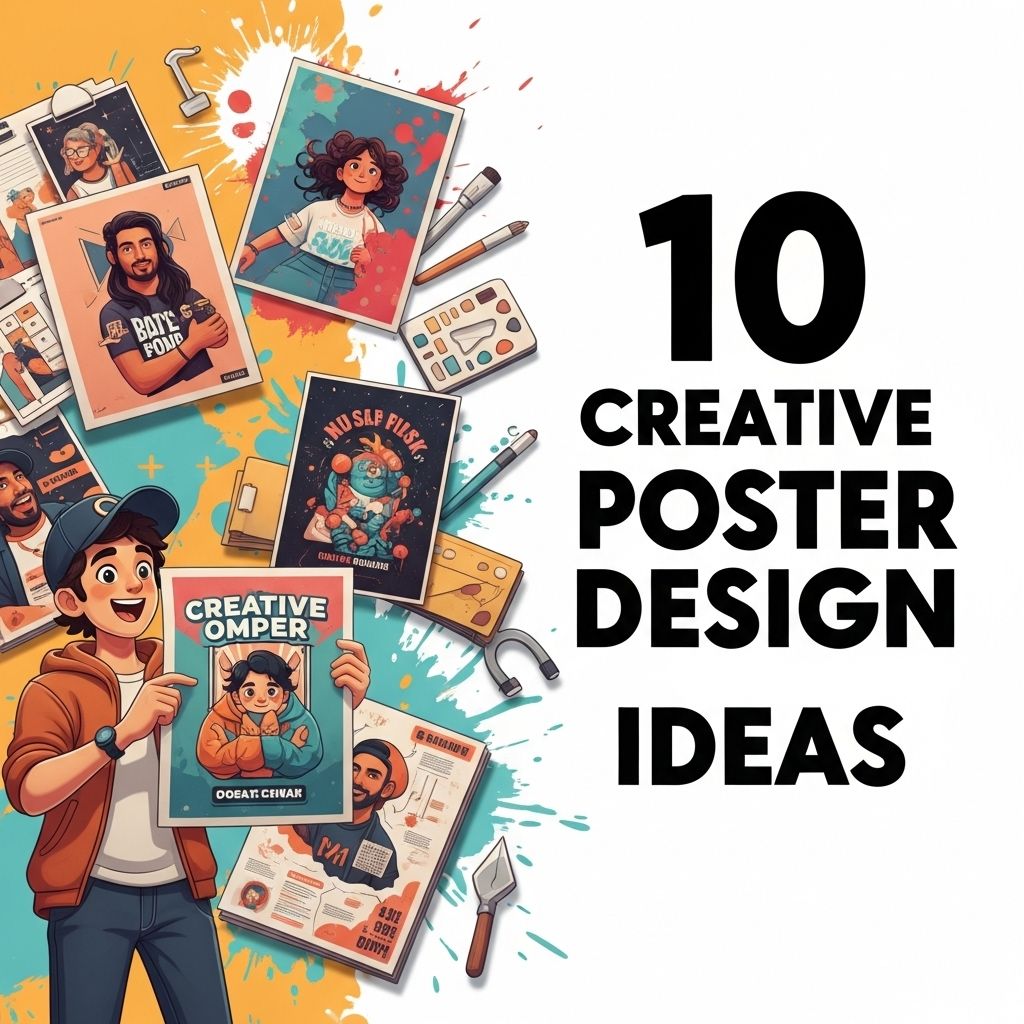In the competitive world of graphic design, having a standout portfolio is essential for attracting clients and showcasing your skills. A well-curated portfolio not only highlights your best work but also tells a story about your style and capabilities. This article explores ten innovative graphic design portfolio ideas that can help you capture attention and leave a lasting impression.
1. Interactive Online Portfolios
With the rise of digital platforms, an interactive online portfolio can set you apart. Unlike static portfolios, interactive ones engage users and allow them to explore your work in a dynamic way.
Benefits:
- Increased engagement from potential clients.
- Opportunities to showcase your web design skills.
- Ability to include multimedia elements like videos and animations.
2. Themed Portfolio Collections
Creating themed collections within your portfolio allows you to group your work based on specific styles, projects, or industries. This structured approach makes it easier for clients to find relevant examples.
Examples of Themes:
- Branding Projects
- Web Design
- Print Design
- Illustration Styles
3. Case Studies
Instead of merely displaying finished projects, include detailed case studies that outline your design process. This not only showcases your final product but also your thought process, problem-solving skills, and the value you bring to clients.
A Typical Case Study Should Include:
- Project background
- Goals and objectives
- Research and inspiration
- Design iterations
- Final outcomes
4. Personal Branding
Your portfolio is a reflection of your personal brand. Invest time in creating a cohesive design that aligns with your unique style, personality, and the type of work you want to attract.
Key Elements of Personal Branding:
| Element | Description |
|---|---|
| Logo | Your custom logo that represents your brand. |
| Color Scheme | A consistent palette that reflects your style. |
| Typography | Fonts that align with your branding. |
| Tone of Voice | Your unique way of communicating in text. |
5. User-Friendly Navigation
A user-friendly navigation system can significantly enhance the browsing experience of your portfolio. Ensure that visitors can easily find their way around and locate specific projects without hassle.
Navigation Tips:
- Use clear labels for sections.
- Include a search bar.
- Implement a breadcrumb trail.
6. Mobile-Responsive Design
With a growing number of people accessing portfolios via mobile devices, having a mobile-responsive design is crucial. Your portfolio should look great and be functional on any screen size.
Responsive Design Considerations:
- Fluid grid layout
- Scalable images
- Touch-friendly navigation
7. Social Media Integration
Integrating your social media profiles can enhance your portfolio by providing additional avenues for potential clients to engage with you. It also helps in building your online presence.
Ways to Integrate:
- Social media icons on your homepage.
- Links to relevant posts showcasing your work.
- Embedding your Instagram feed for visual updates.
8. Testimonials and Client Feedback
Including testimonials from previous clients can add credibility to your portfolio. A well-placed testimonial can reassure potential clients about your professionalism and the quality of your work.
How to Gather Testimonials:
- Request feedback after project completion.
- Offer to write a testimonial for your client as a trade.
- Use a feedback form to gather structured responses.
9. Diverse Project Formats
By incorporating diverse project formats—such as videos, animations, and interactive mockups—you can demonstrate a broader skill set and keep your audience engaged.
Project Formats to Consider:
- Video walkthroughs of your design process.
- Before and after comparisons for branding projects.
- Interactive prototypes for UX/UI projects.
10. Regular Updates and Maintenance
Finally, your portfolio should be a living document that evolves with your career. Regular updates not only keep it fresh but also show potential clients that you are active and engaged in your field.
Tips for Maintenance:
- Set a schedule for regular portfolio reviews.
- Add new projects as they’re completed.
- Remove outdated or less relevant work.
In conclusion, a strong graphic design portfolio is an essential tool for standing out in a competitive market. By utilizing these ten ideas, you can create a distinctive and engaging portfolio that effectively showcases your talents and attracts potential clients.
FAQ
What are some creative graphic design portfolio ideas?
Some creative graphic design portfolio ideas include creating a themed portfolio, using interactive elements, showcasing process work, incorporating video presentations, and designing a unique physical portfolio.
How can I make my graphic design portfolio stand out?
To make your graphic design portfolio stand out, focus on a cohesive design style, highlight your best work, include a personal touch, and ensure your portfolio is easy to navigate.
Should I include personal projects in my graphic design portfolio?
Yes, including personal projects in your graphic design portfolio can showcase your creativity, passion, and unique style, helping potential clients or employers see your versatility.
What format should my graphic design portfolio take?
Your graphic design portfolio can take various formats, including an online website, a PDF download, or a physical portfolio, depending on your target audience and presentation style.
How often should I update my graphic design portfolio?
You should update your graphic design portfolio regularly, ideally every 6 months, to ensure it reflects your latest work and skills, keeping it relevant and appealing to viewers.




